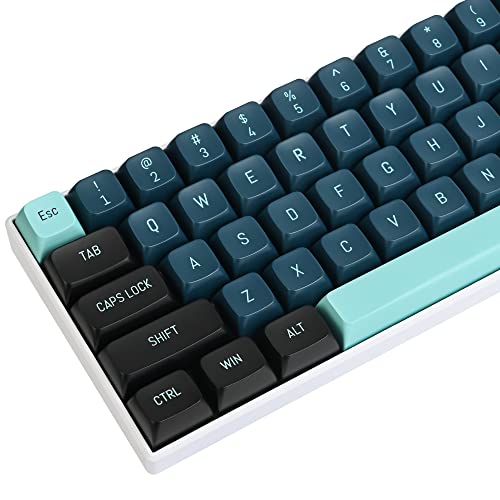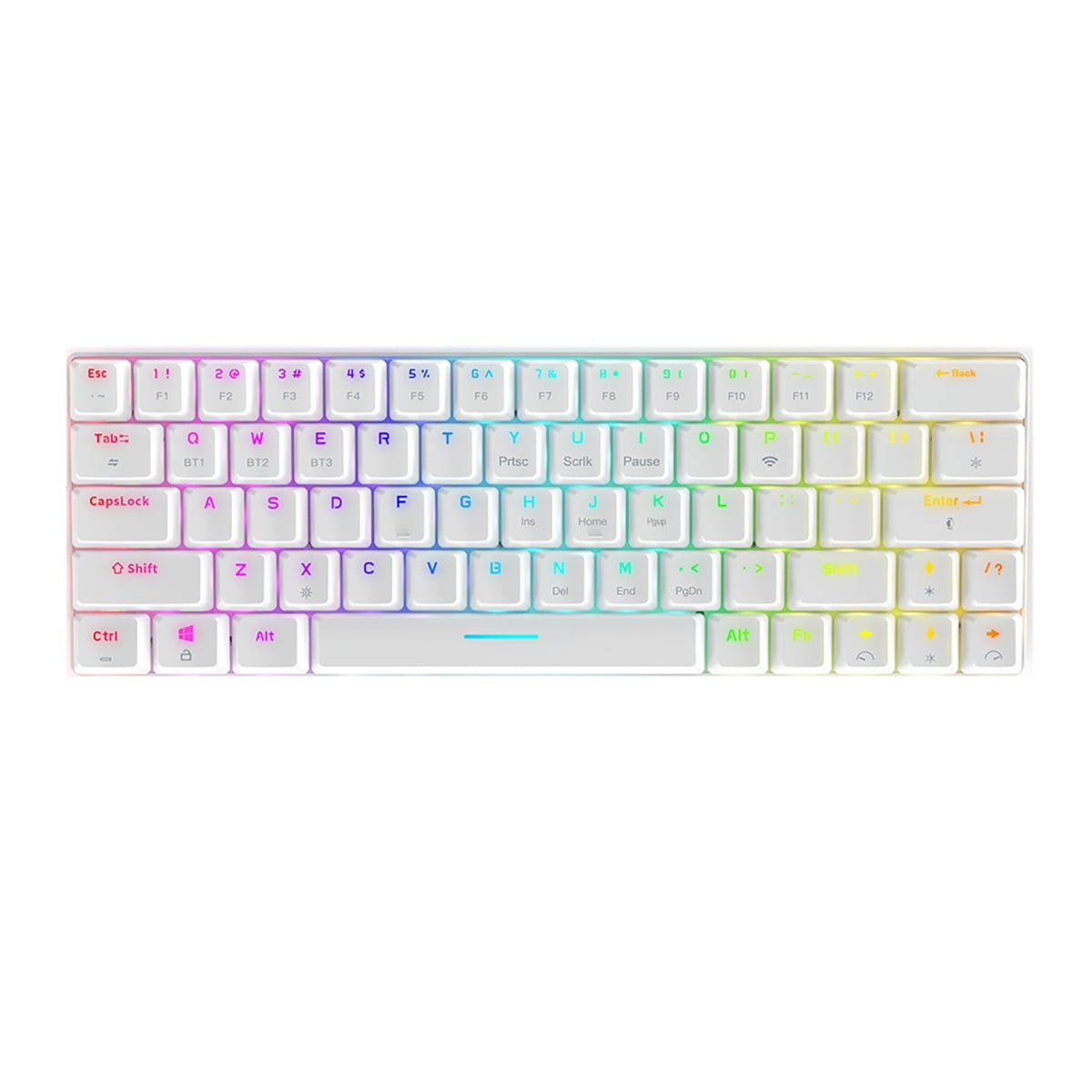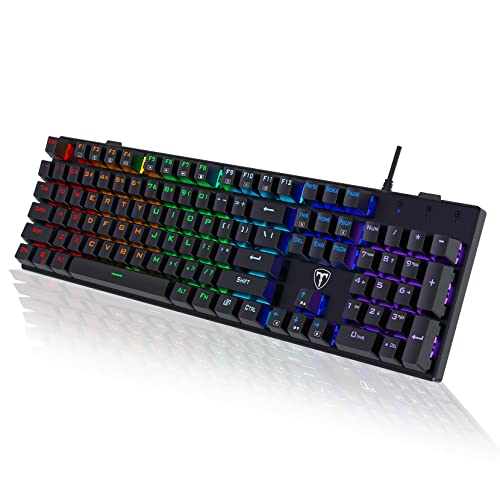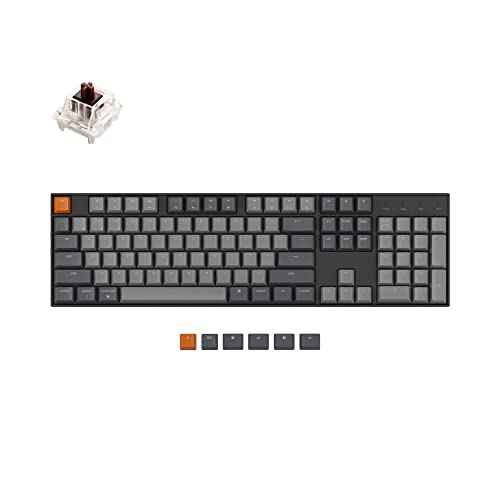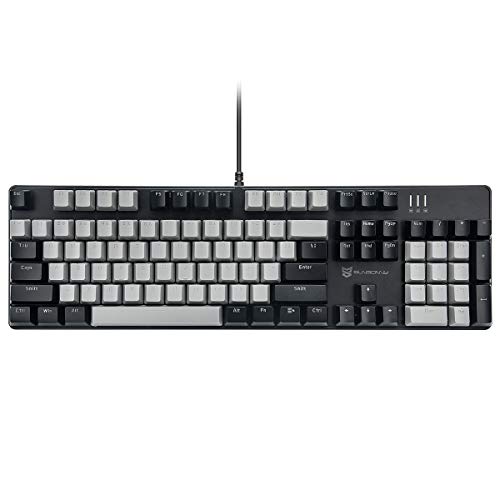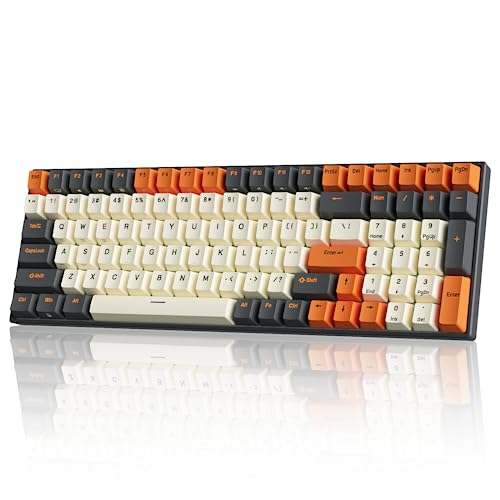Choosing the right key switch is one of the coolest parts of picking out a mechanical keyboard. The feel and sound of each switch can really change your typing experience. Whether you’re gaming or just typing away at work, getting the right switch can make a huge difference in comfort and performance.
There are three main types of switches you’ll come across: linear, tactile, and clicky. Linear switches are smooth and quiet. They don’t have that noticeable bump when you press them down, which makes them great for fast typing or gaming. Tactile switches give you a little bump to let you know you’ve pressed the key, making it easier to type without bottoming out. Clicky switches are loud and satisfying, giving you that extra feedback with a distinct click. If you like that audible response, these are the ones to go for.
When exploring mechanical keyboards compatibility, it’s also important to consider how the switches feel under your fingers. Hands-on testing is the best way to find out what feels right for you. If you can, try out a few different keyboards at a local store. You’ll get a real sense of what you like and don’t like. Many enthusiasts recommend purchasing a switch tester to play around with different types before committing to a keyboard.
Don't forget to think about how you plan to use the keyboard, too. For office work, you might prefer something quieter and less distracting. But if you’re a gamer who wants to get every possible advantage, you might lean towards those speedy linear switches. Remember, the switch you choose can significantly impact your productivity and enjoyment, so take your time in finding that perfect match!
Connecting to Different Devices Easily
Connecting your mechanical keyboard to different devices doesn’t have to be a hassle. Many modern mechanical keyboards are designed with versatility in mind, making it super easy to switch from a computer to a tablet or even a game console.
Some keyboards come with wireless options like Bluetooth, letting you connect to your devices without any cables getting in the way. This is perfect for keeping your workspace tidy or if you like to game on your couch. Just make sure the keyboard supports the Bluetooth version compatible with your device.
If you're using a wired connection, just plug it into the USB port of any device, and you’re good to go. Most mechanical keyboards have a USB Type-A connector, which fits into most computers and laptops. Check if your device has USB-C; in that case, you might need an adapter to connect smoothly.
Compatibility is also about the operating system. Many keyboards work seamlessly with Windows, macOS, and even Linux. Some models come with shortcuts tailored for different OSs, so you can quickly switch between commands without any confusion.
So when you’re considering mechanical keyboards compatibility, think about how you plan to use it across different devices. Finding one that fits your needs will make your typing experience much more enjoyable, whether you’re typing a paper, gaming, or just browsing the web.
160 Custom CSA Profile Keycaps for Mechanical Keyboards
Transform your typing experience with vibrant custom keycaps that fit perfectly and look stunning
Product information
$29.99
Product Review Score
4.99 out of 5 stars
206 reviewsProduct links
Choosing the Right Keycap Material
When you're diving into the world of mechanical keyboards, one thing you'll notice right away is the variety of keycap materials available. Each material has its vibe and feel, and knowing them helps you find the perfect match for your setup. Let's explore the most common keycap materials so you can nail that mechanical keyboards compatibility.
First up, you’ve got ABS plastic. This material is lightweight and pretty affordable, making it a popular choice, especially for budget options. The only downside? It tends to wear down and shine over time. If you’re all about getting that fresh look for longer, this might not be your top pick.
Next, let’s talk about PBT plastic. It's tougher than ABS and stands up to wear and tear much better. PBT caps feel nice under your fingers and don’t get that shiny look as quickly as ABS. If durability is high on your list, PBT is where it’s at and definitely bumps up your mechanical keyboards compatibility.
If you're really looking to spice things up, consider double-shot keycaps. These are made by molding two layers of plastic together, allowing for designs that won’t fade away. They’re often made from PBT, so you get the best of both worlds: cool designs and great durability. It’s a smart way to add some personal flair while maintaining quality.
Finally, you might find some keyboards with metal or resin keycaps. These are usually for those who want something really unique and eye-catching. They can be heavy, but if you're going for a premium feel and look, they might just be the right fit for you. Remember, compatibility is key. Make sure your choice of material matches your keyboard for the best experience.
BlitzWolf 61-Key Wireless Mechanical Gaming Keyboard
Enhance your gaming experience with the ultimate wireless mechanical keyboard from BlitzWolf
Product information
$59.99 $29.99
Product Review Score
4.2 out of 5 stars
228 reviewsProduct links
Understanding Size and Layout Options
When diving into the world of mechanical keyboards, size and layout options can feel overwhelming. But don’t worry! Let’s break it down to make sense of it all. One of the first things to consider is how much space you have. Keyboards come in various sizes, from full-sized to compact.
Full-sized keyboards have all the keys you might expect, including a numpad. They’re great if you do a lot of typing or number crunching. Tenkeyless (TKL) keyboards skip the numpad, which saves space and makes them easier to fit on smaller desks. If you’re really tight on space, you might want to check out 60% or 65% keyboards. These tiny wonders cut out a lot of extra keys but still keep the essentials.
Layout also plays a role in Mechanical Keyboards Compatibility. Most keyboards feature a standard layout, but some may have unique arrangements. If you have specific needs, like gaming or programming, certain layouts can provide those shortcuts you crave. Plus, different switches can give you varying feels and sounds, so you can personalize your typing experience.
Ultimately, choosing the right size and layout helps you find a keyboard that meets your needs. Think about your workspace, how you plan to use the keyboard, and what layout feels comfortable for you. It’s all about making sure you find the perfect match for an awesome typing experience.
